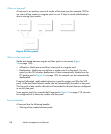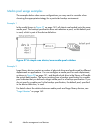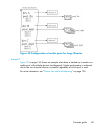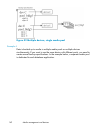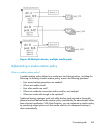• system platform (one pool for UNIX systems, one for Windows 2000 systems,
and one for Windows XP systems)
• per system (every system has its own pool)
• organizational structure (all systems in department_A have a pool, and systems
in department_B have another pool)
• systems categories (running large databases, or business critical applications)
• backup type (all full backups use one pool, and all incremental backups use
another pool)
• combinations of the above criteria, and more.
A simplified way to think about media pools is to view them as a destination for your
backup while you look at the devices as a transfer mechanism between the data and
the media pools.
The relationship of a pool to a system category is defined by putting certain systems
into the same backup specification and also specifying the pool(s). The options used
(when defining the devices, pools, and backup specifications) determine how the
data of the objects will end up on the media.
Grouping such media used for a similar kind of backup to media pools allows you
to apply common media handling policies on a group level while not bothering with
each medium individually. All media in a pool are tracked as one set and have the
same media allocation policy.
Default media pools
Data Protector provides default media pools for various media types. These default
media pools allow you to quickly run backups without having to create your own
media pools. However, to efficiently manage your large environment, create different
media pools for specific needs. When you run a backup, specify which media pool
to use.
Free pools
If media allocated to a specific media pool run out, you cannot use the media in
another pool, even if the media are of the same type. This can result in unnecessary
mount requests and operator intervention. To solve this problem, you can use the
single pool model, at which all media are in the same pool. While this allows you
to share free media, it compromises the benefits of using media pools in the first
place: easier media management, separation of important from not so important
data, etc. To alleviate this drawback, free pools are used.
Concepts guide 137












